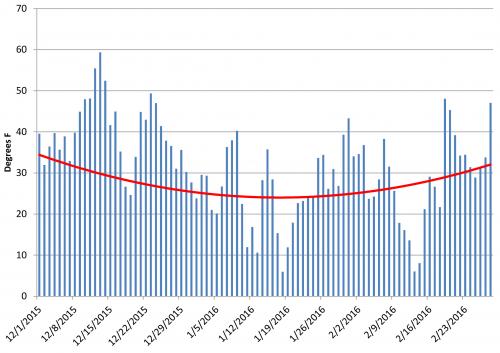Corn flea beetle survival in 2016
The 2016 winter temperatures strongly influence the potential for corn flea beetle survival in southwest Michigan.
Stewart’s wilt is a bacterial disease of corn that overwinters in the gut of corn flea beetles. While this pathogen rarely causes issues with corn hybrids, it can be devastating to seed corn and sweet corn, which are more sensitive to the disease. Corn flea beetle winter survival is strongly correlated with the harshness of winter, particularly with temperature.
One method of estimating corn flea beetle survival is to look at average winter temperatures (December-February). Survival is anticipated to be low when winter temperatures average below 27 degrees Fahrenheit, and is quite high when the average temperatures for this period are 33 F or above. In looking at this method, the average temperature recorded at the Mendon Enviro-weather station was 31.6 F. This is considerably warmer than 27 F, but less than the 33 F that would predict high levels of corn flea beetle survival. The average temperature at the Coldwater Enviro-weather station was just slightly cooler at 31.5 F during this time period.
Another method for predicting corn flea beetle survival uses the sum of the average temperature for each month between December and February. The total average monthly temperature was 94.8 F at the Mendon Enviro-weather station. Temperatures were again slightly cooler at the Coldwater Enviro-weather station, totaling 87.5 F for the period. Using this method, three-month totals less than 80 predict poor corn flea beetle winter survival, while totals above 100 predict high survival rates. With this system, the 2015-2016 winter falls near the middle of the “normal” range. The temperature regime would suggest a reasonable chance of normal survival rates of corn flea beetle this spring.
Since the weather does not appear to have greatly reduced the survival potential of corn flea beetles this year, and due to the importance of keeping Stewart’s wilt out of seed corn production fields, Michigan State University Extension suggests growers continue scouting for these early season pests and controlling them according to their seed company agronomic guidelines.
Mendon 2016 average daily temperatures compared to normal (red line)




 Print
Print Email
Email

